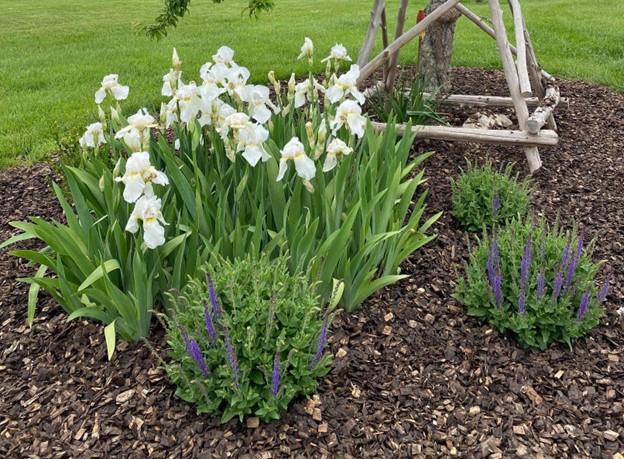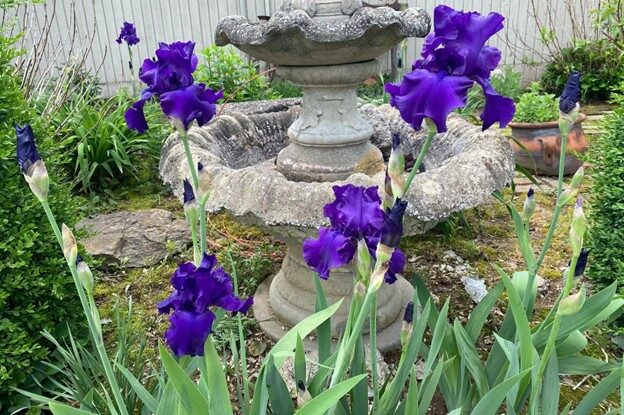There’s a grace about a garden that grows irises. The beautiful blooms evoke memories of bygone days, like time spent in a grandparent’s sunny, neatly trimmed yard.
Irises are definitely among the most popular perennials in the garden, and they can be easily grown by gardeners and flower farmers of any experience level. But to maintain their beauty, irises do require regular attention.
Here at the farm, June is coming to a close, and our iris show has ended. For now, we’re leaving the foliage intact on the rhizome, but cutting back the spent flower stalks. Both steps are vital to next year’s performance. By leaving the foliage alone, more nutrients will return to the roots. By cutting back the spent flower stalks, we prevent plant energy from being used for seed production. In mid-autumn, we’ll cut the foliage back to about 3 inches above the soil line and trim it into a fan shape.
August and September are the months for dividing iris clumps and planting new irises.
Irises should be divided every three years or so. This keeps the plants healthy and productive—and it provides room for more iris growth. The irises you remove from existing clumps can be transplanted elsewhere in your garden.
Following proper planting guidelines is crucial for growing this magnificent early summer perennial.
- Choose a spot with well-drained soil and at least six hours of sunlight per day.
- Space rhizomes at least 12 to 18 inches apart to provide room for foliage to expand as the plants grow. Be aware that irises grow quickly.
- Dig a separate hole for each rhizome, about 4 inches deep and 10 inches wide.
- At the bottom of each hole, build a mound of soil on which the rhizome roots will rest.
- Place the rhizome on the mound of soil.
- Backfill the hole with amended soil.
- Lightly tamp the soil firmly down around the rhizome. The rhizome should be just barely covered and slightly exposed. To avoid rot, be careful not to bury the rhizome too deep

When creating gardens here at the farm, I love planting iris in same-color clumps or as a backdrop hedge. In the photo above, you can see I created visual interest by pairing white iris with purple salvia.
Irises make sensational focal points in floral displays, although they can be a bit awkward to work with given the long stems and tall flowers.

In a later blog, I’ll share more about harvesting irises and provide tips for ensuring a longer vase life. For now, explore the iris varieties available from K. van Bourgondien and get your order in soon for your late summer/early autumn planting.
Happy Gardening!
Pamela Anthony
Beehind Thyme Farm & Garden

